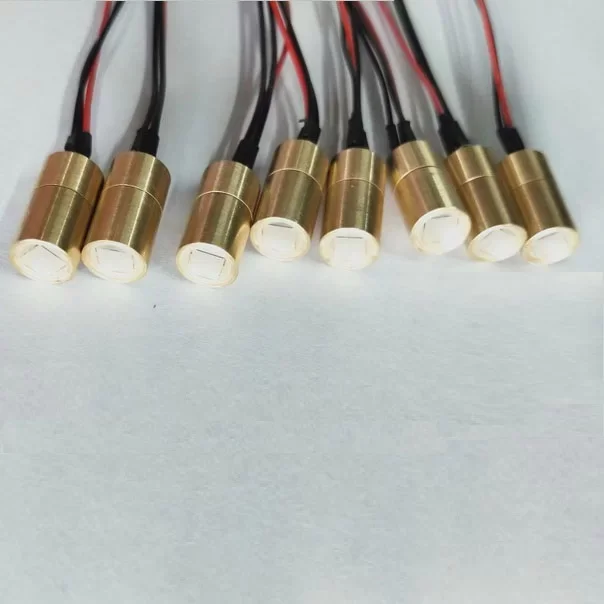DOE(Diffractive optical elements) are emerging optical elements that have developed vigorously in recent years. DOE usually adopts the micro-nano etching process to form two-dimensional diffraction units. Each diffraction unit can have a specific morphology, refractive index, etc., so as to finely control the phase distribution of the laser wavefront. The laser light diffracts after passing through each diffractive element and interferes at a certain distance (usually infinity or the focal plane of the lens) to form a specific light intensity distribution.
After the advent of diffractive optical elements, it has shown great application potential in the fields of high-power lasers, laser processing, laser medical treatment, microscopic imaging, lidar, structured light illumination, laser display and so on.
DOE Advantage
1) High efficiency. The precisely designed diffractive unit structure can ensure that nearly 100% of the laser energy is projected onto the required pattern, and the efficiency is much higher than that of masks and other methods.
2) Easy to use. DOE has a very small size and weight, and can be used when inserted into the optical path. In most cases, it can be used with standard lenses, field lenses, microscope objectives, etc.
3) Flexibility. Thanks to the rapid development of micro-nano processing technology, DOE can be customized for different lasers or different target light intensities and phases. At the same time, the optical path structure of the DOE application is very simple, and with different lenses in use, light spots of different geometric sizes can be realized.
As a new type of optical device, it is necessary to understand its characteristics when using diffractive optical elements.
According to different uses, DOE can usually be divided into beam shaping, beam splitting, structured light, multifocal, and other special beam generation. Each category has different principles, designs and application characteristics. In general, the following principles should be noted before choosing to use DOE components:
1) The beam generated by the diffractive optical element cannot violate the law of light propagation; the specific light intensity distribution constructed by it can only exist within a certain depth of field range. Therefore, when using, the required spot shape, size, working distance, depth of field, etc. are sometimes not compatible, and a trade-off needs to be made.
2) Diffractive optical elements are usually designed based on the wavelength of the laser, beam aperture, beam mode (M2), and near-field intensity distribution, so these parameters should be measured more accurately before selection. Mismatching the usage parameters with the design parameters will result in poor or even unusable usage.
3) Diffractive optical elements are sensitive to the angle of incident light and require better optical path adjustment accuracy and stability.
4) Most diffractive optical elements precisely control the wavefront phase of the incident laser, so other components in the optical path, such as anti-transmission mirrors, lenses, etc., must use high-precision, low-wave aberration devices, otherwise the final effect will be affected.
5) Like conventional transmissive optical elements, diffractive optical elements can be made of infrared materials such as quartz, glass, gemstone, plastic and resin 6, and can also be coated with anti-reflection coatings according to the requirements of different wavelengths and laser intensity.

Laser module manufacturer
There is an excellent laser module manufacturer - Changshu Desheng Optical Electronics Co., Ltd., focusing on planning, developing and manufacturing high-stability, high-quality laser systems, providing high-quality, high-performance, cost-effective laser modules. If you want to know more about laser products, you can visit the website of Changshu Desheng Optical Electronics Co., Ltd. to contact us.